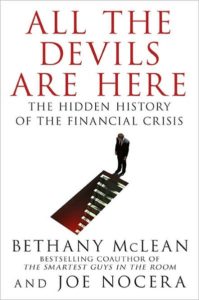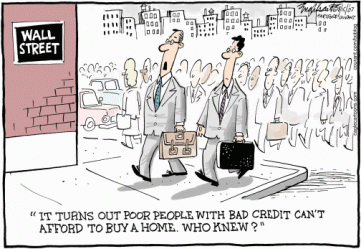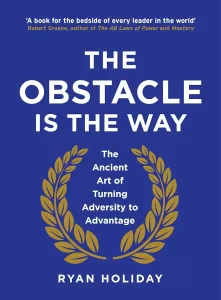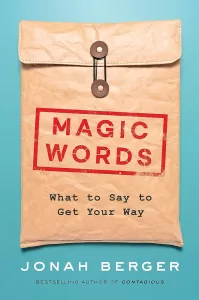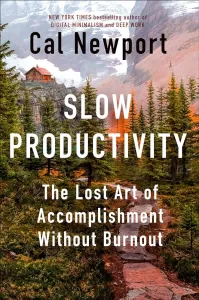Book Review: “All the Devils Are Here”
Book: All the Devils Are Here by Bethany McLean & Joe Nocera
Reviewer: Bobby Powers
My Thoughts: 9 of 10
I loved this book. Although it's long and dense, All the Devils Are Here is a powerful documentary of the hidden aspects of the subprime mortgage crisis. The authors explain how each misstep led to another until the entire system unraveled. It takes talent to stimulate understanding of such a complex topic, yet McLean and Nocera pull it off with ease. They don't withhold any punches, which is exactly what our country needs to understand the subprime crisis and prevent such colossal failures in the future.
Takeaways from the Book
“Hell is empty, and all the devils are here." -William Shakespeare, The Tempest
McLean and Nocera’s title perfectly encapsulates the infernal greed that overtook many financial players during the housing market crash of 2007/2008. The book unearths the seedy underbelly of mortgage lending. Let's meet the Devils who collectively caused the crash...
1) Securitization: MBS, CDO, CDS
- Confused about how securitization works? I don't blame you! It's pretty complicated. Check out this awesome video by Jonathan Jarvis if you'd like to learn more:
- “Historically...less than 2 percent of people lost their homes to foreclosure, because ‘what was good for the lending institution was also good for the borrower.’ But the new securitization market threatened to change that, because once a lender sold a mortgage, it no longer had a stake in whether the borrower could make his or her payments.”
- “CDOs could absorb an infinite supply of triple-B-rated bonds and then repackage them into triple-A securities.”
- “Synthetic CDOs made it possible to bet on the same bad mortgages five, ten, twenty times…Merrill’s risk manager, John Breit, would later estimate that some tranches of mortgage-backed securities were referenced seventy-five times. Thus could a $15 million tranche do $1 billion of damage.”
- “A credit default swap is essentially an insurance policy against the possibility of default—credit protection, it came to be called. One party—a bank—would buy credit default swaps to protect against a default in its loan portfolio.”
- AIG began to sell a ton of CDSs, viewing the sale of those securities as “virtually no risk at all.” “Their internal models told them that there was a 99.85 percent chance that they would never have to pay out a penny.”
- When the mortgage market began to collapse, AIG was on the hook for billions in credit protection in the form of CDSs. AIG's eventual collapse meant that dozens of large investment institutions didn't receive the money they deserved.
2) Government Initiative to Put More Consumers In Homes
- “Early in his second term as president, Bill Clinton announced his National Homeownership Strategy. It had an explicit goal of raising the number of homeowners by 8 million families over the next six years…To get there, the administration advocated ‘financing strategies fueled by creativity to help home buyers who lacked the cash to buy a home or the income to make the down payments.’”
- While improving home ownership numbers was a noble goal, this directive created a perverse incentive in the market to get individuals into homes, no matter the consequences.
3) The Government-Sponsored Enterprises (GSEs): Fannie Mae and Freddie Mac
- “The GSE guarantee meant that the investors no longer had to worry about the risk that homeowners would default, because Fannie and Freddie were assuming that risk.”
- “Fannie, in what would become its response whenever it was challenged, wrapped itself in the mantle of homeownership. It argued that its low costs also lowered mortgage rates for consumers, and that forcing it out of the market would make homes more expensive.”
- “By the end of the 1990s, Fannie and Freddie’s combined assets exceeded the GDP of any nation except the United States, Japan, and Germany, according to a research report by Sanford Bernstein. There was even talk—encouraged by the GSEs—that Fannie and Freddie’s thirty-year note was going to replace thirty-year U.S. Treasury debt as the United States’ benchmark bond.”
- By the summer of 2007, Fannie held or guaranteed $2.7 trillion in mortgages, and Freddie held or guaranteed $2 trillion. Fannie lost $2.1 billion that year and Freddie lost $3.1 billion.
4) The Subprime Mortgage Lenders (Countrywide Financial, Ameriquest, Long Beach Mortgage, and Others)
- “Some of them may have genuinely cared about putting people in homes. All of them cared about getting rich. None of them remotely resembled George Bailey.”
- Mortgage lenders scrapped the traditional model of giving loans to consumers on the basis of the four Cs (credit, capability, collateral, and character).
- “From 1994 to 1999, the number of loans made by companies that identified themselves as subprime lenders increased roughly six times, from about 138,000 to roughly 856,000, according to the Federal Reserve.”
- “Economists, including those at the Federal Reserve, credited subprime lending with the increased rate in homeownership, which by 1999 hit a record 66.8 percent. What tended to be forgotten, though, was that most subprime mortgages did not go toward the purchase of a new house, but rather were refinancings by existing homeowners. (According to a joint HUD-Treasury report, a staggering 82 percent of subprime mortgages were refinancings, and in nearly 60 percent of those cases the borrower pulled out cash, adding to his debt burden.)”
5) The Credit Rating Agencies
- “The rating agencies had always been stingy about bestowing triple-A status on corporate debt. In 2007, for instance, only six companies had a triple-A rating. Yet when it came to tranches of mortgage-backed securities, the rating agencies handed out triple-As like candy. Literally tens of thousands of mortgage-backed tranches were rated triple-A.”
- “There were many reasons why the rating agencies continued to grant triple-As long after they should have stopped: an erosion of standards, a willful suspension of skepticism, a hunger for big fees and market share, and an inability to stand up to Wall Street.”
- “The law allowed investors who weren’t supposed to take much risk—like pension funds—to invest in certain securities if they had a high enough rating.” Pension funds and other "low-risk" funds began to invest in MBSs and CDOs, believing that because many of these securities were given triple-A ratings, they were low-risk investments.
6) The Investment Banks
- “The people who are propelled upward in many cases in corporate America are the guys who said yes to an idea that worked. The guys who said no to a big failure—there’s no list for that. That’s why we end up with bubbles.” -Stan Kurland
- Many risk managers who spoke up against subprime exposure were told to sit down and shut up.
- When banks started to wise up and buy CDSs to cover their mortgage exposure, they failed to realize that “every firm on Wall Street was going to AIG to buy credit default swaps on their super-senior tranches...AIG was on the hook for some $60 billion worth of subprime exposure.”
- By the time of the crash, Bear Stearns, Lehman Brothers, AIG, Merrill Lynch, Washington Mutual, Wachovia, and Citigroup all failed or needed serious help. Congress stepped in to give $700 billion to banks as part of the Troubled Asset Relief Program (TARP).
7) Implicit Trust in the Value at Risk (VaR) Model
- “VaR was meant to measure market risk from one day to the next, with the working assumption that tomorrow would be more or less like yesterday.”
- “Later, many Wall Street CEOs would view their daily VaR number as an expression of their firm’s worst-case scenario. But it was nothing of the sort.”
- “Firms could use VaR to persuade regulators—and themselves—that they were taking on very little risk, even as they were loading up on subprime securities.”
8) The Regulators
- “There is no question, looking back, that Greenspan’s Federal Reserve could have taken steps to cure the growing problems with subprime lending before they got worse…There is also no question that the problems with subprime lending weren’t a secret. After the crisis of 2008, a common refrain arose that no one saw it coming. But that was never true. State attorneys general had filed lawsuits. Housing advocates had continually beaten tom-toms. Repeatedly and in graphic detail, Congress and the regulators—including Greenspan—had been told what was happening on the ground.”
- “In the subprime market, where we badly need supervision, a majority of loans are made with very little supervision. It is like a city with a murder law, but no cops on the beat." -Edward Gramlich
9) The Individual Consumers
- Tens of thousands of consumers fell for “teaser rates” and 2/28 adjustable-rate mortgages.
- When new homeowners hit the third year of their 30-year mortgage, their interest rates skyrocketed. Unfortunately, so did foreclosure rates.
Those Who Profited from the Crash—Namely, John Paulson and Goldman Sachs
- In 2007, John Paulson made $4 billion betting against subprime mortgages!
- “Paulson was seeking to do something that would have a big potential payoff. He wanted to make an industrial-sized short by betting against all of the triple-A tranches of a single synthetic CDO—a CDO, in fact, that he would secretly help construct. In other words, he would make money if homeowners couldn’t pay their mortgages—and to improve his odds, he was going to, in effect, select which homeowners he thought were least likely to pay.”
- “The Goldman Sachs mortgage department, which at its peak had some four hundred people, was, by its nature, conflict central. It underwrote mortgage-backed securities, which it sold to clients…Sometimes Goldman itself was on the other side of a client bet. Most of the time, the client had no knowledge of Goldman’s position.”
- “Later, the Senate Permanent Subcommittee would charge Goldman with making a fortune—$3.7 billion—by betting against its customers when it knew the market was going to fall apart. But that’s not really what happened. The huge gains Goldman made from its short position in 2007 were offset by substantial losses from the securities it couldn’t get rid of.”
Think you’d like this book?
Other books you may enjoy:
- Too Big to Fail by Andrew Ross Sorkin
- The Big Short by Michael Lewis
- A Colossal Failure of Common Sense by Lawrence McDonald and Patrick Robinson
Other notable books by the authors:
- The Smartest Guys in the Room by Bethany McLean and Peter Elkind
Want to become a stronger leader?
Sign up to get my exclusive
10-page guide for leaders and learners.
